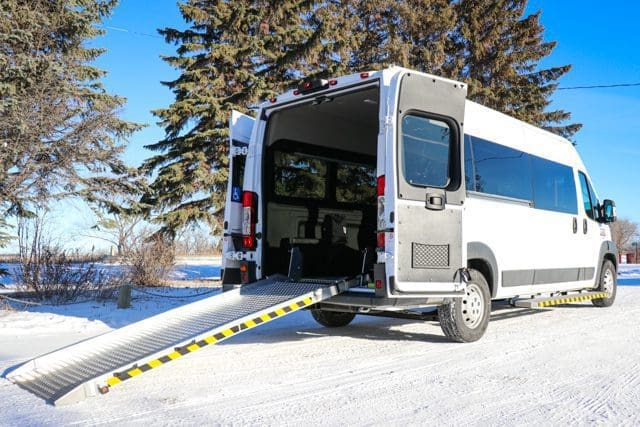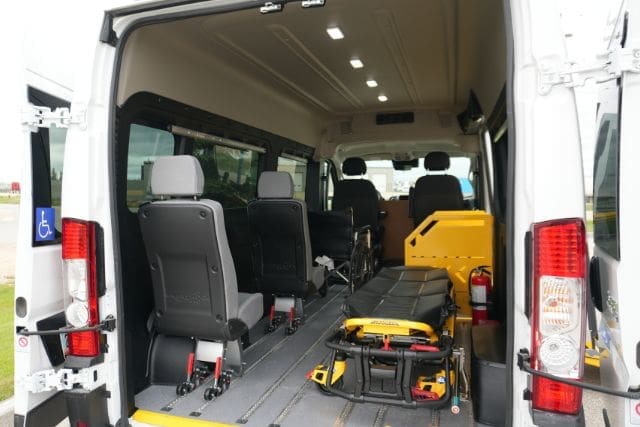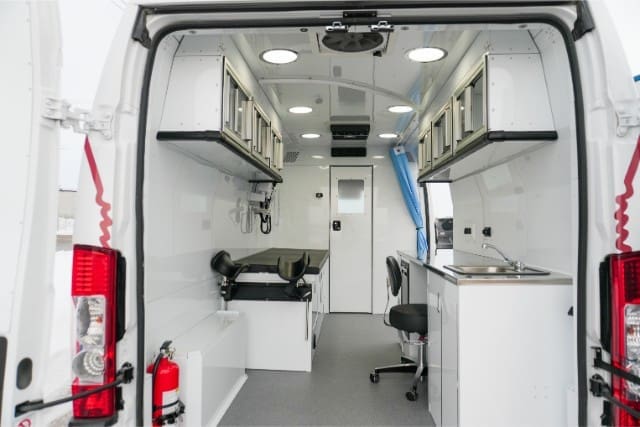Hey there, folks! It’s your pal Dan Cherry, the man with a mission and a whole lot of miles under my belt at MoveMobility. I’ve been at it for over a decade, and today, we’re diving into the world of wheelchair accessible vehicles, the knotty decisions non-profit organizations face, and why it’s sometimes like ordering pizza but getting a salad.
Now, imagine this scenario: You’re part of a non-profit organization trying to make the world a better place. You’re on a quest to provide inclusive transportation options for everyone, and you find yourself at a crossroads. On one hand, there’s the option that’s easy on the wallet, and on the other, there’s the pricier, seemingly sturdier choice. What do you do?
The siren call of low prices for accessible vehicles
It’s a real head-scratcher, folks. People often ask me, “Dan, why should we shell out more for these wheelchair accessible vehicles when we could spend that cash on something else?” Let me paint the picture for you in a language we all understand.
1. The bargain trap
Cheap deals are like a siren’s call, drawing us in with promises of savings. Who can resist a good deal? But remember the last time you snagged a bargain that turned out to be less rock ‘n’ roll and more “rock and, oh, that’s my car breaking down again”? Wheelchair accessible vehicles can be the same rollercoaster.
2. The savings mirage
Low costs on a wheelchair accessible van might seem like a financial lifesaver for your organization, but they often come with a “bonus” of hidden costs in the long run. Think unexpected repairs, maintenance marathons, and passengers grumbling like they’re stuck in a never-ending traffic jam.
The problem is that we have a tendency to turn a blind eye to historical warning signs. We forget about the countless times when opting for the lowest price led to bad experiences. We conveniently overlook the fact that the cheapest option doesn’t always equal the best option.
3. The “trust the cheapest” tango
It’s a universal conundrum. We, humans, have a knack for overlooking potential problems and putting our faith in the vendor with the lowest price tag. It’s like trusting a skinny chef to make a five-star meal—history tells us it might not be the wisest choice.
Nonprofit organizations champion good causes, but sometimes, they hit a few speed bumps. We often see folks go from the excitement of ordering cheaply priced pizza to being disappointed with the outcome. Wheelchair accessible vehicles can have a similar “plot twist.”
Imagine this scenario
Let’s paint a picture to illustrate this point. Imagine you’re buying a car for your personal use.
You have two choices:
- Car A: It’s brand new and shiny, and it’s the cheapest car on the lot.
- Car B: It’s slightly pricier but comes with a full warranty, stellar safety features, and a reputation for reliability.
Now, if you’re like most people, Car A might seem like a fantastic deal at first. After all, who doesn’t want to save money? But remember the last time you bought a cheap gadget that fell apart in a week? Frustrating, right? The same principle applies to accessible vehicles for non-profits.
The non-profit conundrum with wheelchair accessible vehicles

Non-profit organizations often face the same dilemma. They need accessible vehicles to serve their communities and clients better. However, limited budgets and the desire to save money can cloud their judgment. This is where my role comes in. I’ve seen firsthand the typical pain points non-profits face, and what makes them angry or frustrated with accessible vehicles.
The cost of cutting corners
Choosing the cheapest option might seem like a cost-saving masterstroke. But let me tell you, it’s a classic example of penny-wise and pound-foolish. Here’s why:
Maintenance nightmares: Cheap vehicles often come with a hidden cost – maintenance nightmares. Non-profits end up spending more on repairs, and the frustration can be off the charts. Remember, a vehicle that’s constantly in the shop isn’t helping anyone.
Reliability matters: Reliability is essential for non-profits. When you’re dealing with people’s healthcare, transportation can’t be unreliable. Accessible vehicles must run smoothly, and the cheapest options often don’t deliver that reliability.
That’s because cheaper options often compromise on materials and engineering. Cutting costs on components and construction have a negative impact on the overall performance and longevity of the vehicle.
Long-term value: My passion is educating non-profits to see the bigger picture. We need to focus on long-term value instead of short-term savings. It’s like choosing a high-quality tool that lasts for years rather than a cheap one that breaks after a few uses.
Safety: Wheelchair accessible vehicles must be safe and reliable. The cheapest options often compromise on safety features and durability, putting passengers and drivers at risk
So, what’s the solution?
People often ask me why our prices might be higher. It’s a great question, and I acknowledge that non-profits often operate on tight budgets. But don’t overlook this other very important question: What’s the true cost of choosing the cheapest wheelchair accessible van option?
Finding the right balance: My recommendation is to find a balance. I’m not saying you should just go for the most expensive option either. It’s about considering the long-term benefits, including reliability, reduced maintenance costs, and the peace of mind that comes with knowing your accessible vehicle won’t let you or the people you serve down.
Consider the total cost of ownership: Take a step back and look at the total cost of ownership of a wheelchair accessible van. Calculate not just the initial price but also the maintenance, repairs, and downtime costs. This holistic approach often shows that investing a bit more upfront can lead to significant savings down the road.
Talk to fellow non-profits: Don’t just take my word for it. Talk to other non-profits that have faced this dilemma. They can share their experiences and help you understand the importance of reliability and the long-term value of an accessible van.
Wrapping it up

In the world of accessible vehicles for non-profits, the cheapest option isn’t always the best option. It might seem like a good deal at first, but it can lead to a world of headaches, frustration, and, in the end, higher costs. It’s all about making logical decisions that focus on long-term value.
So yes, that is a great question, but don’t overlook this other very important question: Is it worth the risk to save a few dollars now when the true cost might be much higher in the long run?
In the words of someone’s grandpa, “If you think hiring a professional is expensive, wait until you hire an amateur.” It’s a bit like choosing the cheapest accessible vehicle. So, if you’re ready to explore the right accessible vehicle for your non-profit organization, let’s chat.
Or, take a look at these articles, which will give you a better idea of how to rent a wheelchair van and the costs involved.
Keep the wheels rolling and the doors open.








